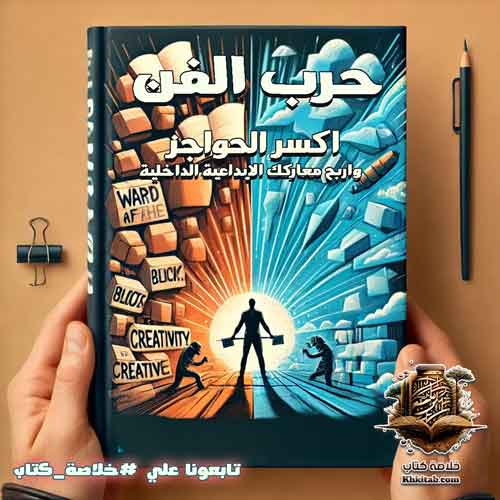The Art of Talking to Anyone: Essential People Skills for Success in Any Situation Book Summary

In an era dominated by rapid communication and advanced information technology, understanding the art of conversation and the essence of effective communication has become paramount. “The Art of Talking to Anyone: Essential People Skills for Success in Any Situation” offers a comprehensive exploration into honing one’s communicative prowess.
This book delves deep into the intricacies of developing conversational artistry, starting from first impressions all the way to active listening and effective communication strategies. Through real-life examples and practical exercises, the book aims to equip readers with the tools and techniques needed to communicate effectively across a diverse range of situations.
The work also emphasizes the importance of understanding cultural nuances and adapting communication styles accordingly. As we embark on this introduction, we invite you to journey through the fascinating world of effective communication as elegantly presented by the author, Rosalie Maggio.
Table of contents
How Do First Impressions Shape Our Conversations and Relationships?
In the realm of effective communication, first impressions play a pivotal role. As detailed in “The Art of Talking to Anyone: Essential People Skills for Success in Any Situation,” first impressions set the tone for all subsequent interactions. But how are these impressions formed, and why are they so impactful? More importantly, how can one ensure that their initial impression leaves a positive mark?
The initial moments of an interaction are crucial because the human brain is wired to make swift judgments. These judgments, often made in mere seconds, are based on a myriad of factors: body language, vocal tone, appearance, and even choice of words. While it may seem superficial to some extent, it’s an evolutionary trait that once helped our ancestors quickly assess threats or opportunities.
The lasting impact of a first impression is profound. Whether it’s a job interview, a first date, or a new business pitch, the way individuals perceive us during those initial moments can influence their overall perception of our character, expertise, and trustworthiness. This is why even the slightest missteps in our introduction can sometimes overshadow our subsequent positive actions. For instance, starting a presentation with a lack of confidence might cause listeners to question the validity of the information shared, even if the content is sound.
So, how can one craft an effective first impression? Here are some practical insights derived from the book:
Self-awareness: Understand your natural communication style and work on aspects that might not come naturally, such as maintaining eye contact or giving a firm handshake.
Preparation: Familiarize yourself with the context of the meeting. Knowing your audience and the purpose of the interaction will allow you to tailor your approach effectively.
Genuine Interest: Show genuine curiosity and interest in the other party. This can be achieved by asking open-ended questions and actively listening to their responses.
Body Language: Ensure your body language is open and inviting. Avoid crossing arms or looking away, as these can be interpreted as defensive or disinterested gestures.
Dress Appropriately: While it’s essential to be yourself, dressing appropriately for the occasion can demonstrate respect and thoughtfulness.
In conclusion, while it’s true that we shouldn’t judge a book by its cover, the reality is that humans are conditioned to do so. By recognizing the significance of first impressions and being equipped with the right tools and strategies, as presented in “The Art of Talking to Anyone,” individuals can navigate these initial interactions more confidently and positively.
Our Facebook Page – Book Summary
How Does Active Listening Elevate Your Communication Skills?
Active listening, a core concept presented in “The Art of Talking to Anyone: Essential People Skills for Success in Any Situation,” isn’t merely about hearing words; it’s a comprehensive approach to communication. But what makes active listening so unique, and why is it pivotal for meaningful interactions?
To start, active listening is about giving the speaker undivided attention, understanding the message being conveyed, and then responding thoughtfully. It isn’t just the act of hearing; it’s absorbing and processing information, asking clarifying questions, and ensuring comprehension. This focused form of listening not only allows for better understanding but also fosters trust and respect between the conversing parties.
One of the standout attributes of active listening is recognizing non-verbal cues. Often, what’s left unsaid speaks volumes. Gestures, facial expressions, and body posture can provide insights into the speaker’s emotions and underlying sentiments. By being attuned to these cues, the listener gains a more profound understanding of the topic, the speaker’s perspective, and any unspoken concerns.
Furthermore, empathy is tightly woven into the fabric of active listening. It’s not just about understanding what’s being said but feeling the emotions behind the words. Demonstrating empathy means showing genuine concern and acknowledging the speaker’s feelings, which can result in a deeper connection and a more fruitful conversation.
Incorporating active listening techniques into daily conversations can profoundly impact personal and professional relationships. By prioritizing understanding and empathy, individuals can foster a communication environment where both parties feel valued, heard, and understood. Consequently, the lessons from “The Art of Talking to Anyone” remind us that active listening isn’t just a skill but an art form that, when mastered, can lead to richer, more meaningful interactions.
Self-development – Book Summary (khkitab.com)
How Can “The Art of Talking to Anyone” Guide You to Master Conversation Starters in Every Situation?
Starting a conversation might seem natural to some, but it’s a challenge for many. In “The Art of Talking to Anyone: Essential People Skills for Success in Any Situation,” there’s an emphasis on how initiating conversations in different settings is an art form, requiring a blend of intuition, context understanding, and strategy. So, what are the key takeaways for mastering conversation starters in both casual and professional contexts?
Firstly, in casual settings, being observant is a golden rule. Often, our surroundings provide ample material to kickstart a discussion. It could be something as simple as the weather, a piece of art on the wall, or even a shared experience like waiting in a long line. These observations not only act as conversation catalysts but also show that you are present and engaged with your environment.
However, in a professional context, it’s essential to be both prepared and relevant. Having a grasp of current events, industry news, or even company updates can be beneficial. A starter could be a recent article you read about the industry or a commendation on a job well done. By showcasing your awareness of the professional landscape, you’re not only initiating a conversation but also demonstrating your proactive attitude.
Moreover, a universal approach in all settings is to ask open-ended questions. These are questions that cannot be answered with just a ‘yes’ or ‘no’. By posing such queries, you encourage the other person to share more, thus fostering a more profound and engaging discussion.
Lastly, always remember the importance of body language. An open posture, eye contact, and a genuine smile can make the other person feel welcomed and inclined to converse.
In conclusion, while starting a conversation can seem daunting, with the right techniques, as elucidated in “The Art of Talking to Anyone,” one can navigate both casual chit-chats and professional dialogues with ease and confidence. The art of conversation isn’t just about speaking; it’s also about creating a conducive environment for meaningful interactions.
How Can “The Art of Talking to Anyone: Essential People Skills for Success in Any Situation” Guide You Through Difficult Conversations?
Handling challenging dialogues, whether they involve personal disagreements, sensitive subjects, or confrontations, requires finesse and understanding. “The Art of Talking to Anyone” by Rosalie Maggio offers readers a deep dive into mastering the art of navigating these conversations.
One of the primary insights from the book is the significance of emotional intelligence. Recognizing not just your own emotions, but also those of the person you’re conversing with, allows for more empathetic and effective communication. A key aspect here is active listening – ensuring you’re truly hearing and processing what the other person is saying, rather than simply waiting for your turn to speak.
Further, it’s crucial to understand that not every disagreement needs to be a confrontation. The book stresses the importance of distinguishing between the two. Disagreements can be opportunities for growth, understanding, and forging deeper connections if approached with an open mind and heart. On the other hand, confrontations, while sometimes necessary, are more about setting boundaries or standing up for oneself.
Another vital takeaway is the power of open-ended questions in difficult dialogues. Instead of making accusatory statements which might escalate tensions, asking open-ended questions can help de-escalate a situation, giving both parties a chance to express themselves and find common ground.
Additionally, Maggio underscores the importance of body language. In tense conversations, our non-verbal cues often speak louder than words. Maintaining a relaxed posture, avoiding aggressive gestures, and maintaining eye contact can all contribute to a more constructive conversation.
Lastly, the book offers a reminder that sometimes, it’s okay to agree to disagree. Not all conflicts will find resolution, and sometimes the best course of action is to acknowledge differences and move forward with mutual respect.
In essence, “The Art of Talking to Anyone” equips readers with the tools they need to approach difficult conversations with confidence, empathy, and understanding, turning potential confrontations into opportunities for connection and growth.
How Can “The Art of Talking to Anyone” Help Navigate Cultural Communication Nuances?
In an increasingly globalized world, understanding cultural nuances has never been more critical. “The Art of Talking to Anyone: Essential People Skills for Success in Any Situation” by Rosalie Maggio delves deep into the intricacies of human communication, highlighting the importance of recognizing and respecting cultural differences in conversational styles.
One of the profound insights offered by the book is the concept of ‘cultural lenses.’ Just as a pair of glasses can alter our vision, cultural backgrounds shape the way individuals perceive and interpret information. Maggio emphasizes that these cultural lenses affect not only the content of communication but also its style, tone, and even non-verbal cues.
Moreover, the book underscores the significance of active listening, especially when interacting with someone from a different cultural background. Active listening involves not just hearing words but understanding the underlying emotions, intentions, and cultural contexts behind them. This is essential as what might be perceived as a casual remark in one culture could carry deep significance in another.
Additionally, “The Art of Talking to Anyone” provides practical tips on avoiding cultural faux pas. For instance, while maintaining eye contact might be seen as a sign of honesty in Western cultures, it could be perceived as aggressive or disrespectful in others. The book also sheds light on the importance of body language, personal space, and even the nuances of humor across different cultures.
In conclusion, Maggio’s work is a comprehensive guide for anyone looking to enhance their communication skills in a multicultural environment. It emphasizes the need for patience, empathy, and open-mindedness and offers actionable strategies to navigate the intricate maze of cultural communication effectively. Whether you’re a professional working in an international setting, a traveler, or simply curious about the world’s diverse cultures, this book serves as a valuable tool to bridge communication gaps and foster mutual understanding.
How Does “The Art of Talking to Anyone: Essential People Skills for Success in Any Situation” Illuminate the Significance of Body Language in Communication?
In a world increasingly reliant on digital communication, understanding the nuances of face-to-face interaction remains pivotal. “The Art of Talking to Anyone: Essential People Skills for Success in Any Situation” by Rosalie Maggio delves into the complexities of human communication, placing significant emphasis on the role of body language.
Body language, which encompasses gestures, posture, facial expressions, and even the space one occupies, often conveys more information than words alone. Maggio underscores that while verbal dialogue might communicate our thoughts, our body often reveals our true feelings and intentions. A simple example the book elucidates is the disparity between saying “I’m fine” verbally while displaying a clenched fist or a frown—here, the non-verbal cue communicates distress despite the spoken assurance.
Maggio further explores the notion of “mirroring” in the context of body language. Mirroring is the subconscious replication of another person’s body language, signaling empathy and building rapport. By adopting a posture or gesture that mirrors our conversation partner, we forge a non-verbal bond, fostering trust and mutual understanding.
Another crucial aspect covered is the cultural variance in body language. For instance, while maintaining eye contact might be seen as a sign of attentiveness and sincerity in many Western cultures, it could be perceived as confrontational or disrespectful in other cultural settings.
The book also provides invaluable tips on how to “read” body language. Understanding when someone is uncomfortable, defensive, or open to dialogue through their non-verbal cues can be the key to navigating both personal and professional conversations effectively. Furthermore, Maggio suggests that being aware of one’s own body language can influence the outcome of interactions. By projecting confidence, openness, and attentiveness through our posture and gestures, we can set the tone for positive and productive conversations.
In conclusion, while words are undeniably powerful, “The Art of Talking to Anyone” highlights that mastering the art of non-verbal communication is equally, if not more, crucial in truly connecting with others. It serves as a comprehensive guide for those eager to enhance their communication skills in an increasingly interconnected world.
The Art of Talking to Anyone: Essential People Skills for Success in Any Situation Book Summary
How Does “The Art of Talking to Anyone: Essential People Skills for Success in Any Situation” Highlight the Power of Voice Modulation?
Effective communication goes far beyond just the words we choose. In “The Art of Talking to Anyone: Essential People Skills for Success in Any Situation” by Rosalie Maggio, emphasis is placed on the significant role voice modulation plays in how our message is received. Modulating one’s voice involves adjusting pitch, tone, and volume to convey different emotions, emphasize key points, or adapt to different audiences and situations.
- Pitch: The book elucidates that varying the pitch of our voice can dramatically affect the perceived emotion of our statements. A higher pitch can convey excitement or urgency, while a lower pitch can suggest seriousness or authority. Mastering this can help in grabbing the listener’s attention and conveying genuine emotions.
- Tone: Maggio stresses the importance of the emotional quality of our voice. A friendly, warm tone can make the listener feel at ease, while a cold or sharp tone might put them on the defensive. Understanding the subtleties of tone allows for better connection with the audience, whether it’s in a personal conversation or a public presentation.
- Volume: The volume at which we speak can be equally telling. Speaking loudly can demonstrate confidence or signify the importance of a point, but if overused, it can be perceived as aggressive. Conversely, a softer volume can draw listeners in, creating an intimate feel but might be seen as lack of confidence if not used appropriately.
Maggio also touches on the synchronization of voice modulation with body language. When both are in harmony, our message becomes more compelling and authentic. For example, emphasizing a point with both an increase in volume and a decisive hand gesture can be more impactful than using either communication tool alone.
Another insightful point is the cultural nuances of voice modulation. In some cultures, loudness might be perceived as enthusiasm, while in others it could be seen as rudeness. Hence, understanding your audience and cultural context is pivotal when modulating your voice.
In conclusion, while the actual content of our words is crucial, the way we deliver them can make or break our intended message. Maggio’s “The Art of Talking to Anyone” serves as a comprehensive guide for those looking to enhance their communicative prowess in an interconnected world. It underscores the importance of the intricate dance between what we say and how we say it.
How Does “The Art of Talking to Anyone: Essential People Skills for Success in Any Situation” Emphasize the Power of Effective Questioning?
In the realm of communication, the words we use, and how we express them, play a pivotal role. Rozalie Maggio’s “The Art of Talking to Anyone: Essential People Skills for Success in Any Situation” underscores the transformative power of effective questioning. This element of communication can be the bridge to understanding, rapport, and in-depth dialogues. Let’s explore the main concepts regarding this topic:
- Open-ended Questions: Maggio discusses the benefit of using open-ended questions. Instead of receiving a mere ‘yes’ or ‘no’ response, these questions, such as “How do you feel about…?” or “What led you to this decision?” invite a more detailed reply, facilitating deeper understanding.
- Active Listening: The book emphasizes that questioning isn’t merely about asking but also about actively listening to the response. By doing so, you can ask follow-up questions that demonstrate genuine interest and engagement.
- Tailored Questions: Understanding your audience is crucial. Maggio offers insights on crafting questions specifically suited for the individual or group you’re addressing. This shows respect and awareness, making the dialogue more effective.
- Avoiding Leading Questions: Leading questions can skew a conversation and make it seem like you’re trying to push an agenda. By avoiding them, you ensure the discussion remains open and unbiased.
- Purpose-Driven Questioning: Every question should have a purpose, whether it’s to gather information, clarify a point, or delve deeper into a topic. Maggio stresses the importance of being intentional with each question you ask.
By mastering the art of questioning, we don’t just improve our communication; we also foster a space where mutual respect and understanding can thrive. “The Art of Talking to Anyone” provides readers with tools and techniques to elevate their conversational skills, with effective questioning being a standout method. In a world filled with noise, knowing how to ask the right questions can lead to more meaningful, authentic, and impactful conversations.
How Does “The Art of Talking to Anyone: Essential People Skills for Success in Any Situation” Guide on Building Rapport?
Building rapport is paramount in successful communication, and Rozalie Maggio’s “The Art of Talking to Anyone: Essential People Skills for Success in Any Situation” offers invaluable insights into creating meaningful connections. Here are the major points emphasized:
- Active Listening: Maggio underscores the importance of active listening as a core technique to build rapport. By being present and truly listening, you show the speaker you value their perspective, thus fostering trust.
- Non-Verbal Communication: Body language, facial expressions, and tone play an instrumental role in connecting with others. Being open, maintaining eye contact, and mirroring body language can make the other person feel more at ease.
- Find Common Ground: The quickest way to create a bond is to find shared interests or experiences. Maggio provides techniques on how to subtly discover these areas of commonality.
- Empathy and Validation: By demonstrating that you understand and validate the other person’s feelings and viewpoints, even if you don’t agree, you pave the way for a deeper connection.
- Open-ended Questions: These types of questions encourage longer responses and show that you’re genuinely interested in understanding more about the individual.
- Consistency in Actions and Words: People trust consistency. If your actions match your words consistently, you will be seen as more genuine and trustworthy.
- Feedback: Offering positive feedback or compliments can break barriers. However, Maggio emphasizes the need for sincerity, as empty flattery can be counterproductive.
By weaving these techniques into everyday interactions, one can establish a solid foundation of trust and understanding, which is the essence of building rapport. Maggio’s book is a treasure trove for anyone looking to enhance their interpersonal skills and navigate the complexities of human connection.
How Does “The Art of Talking to Anyone: Essential People Skills for Success in Any Situation” Guide on Overcoming Communication Barriers?
In the realm of interpersonal communication, Rosalie Maggio’s “The Art of Talking to Anyone: Essential People Skills for Success in Any Situation” stands out as a pivotal guide. One of the core aspects the book touches upon is overcoming communication barriers. Here are the key takeaways:
- Language Differences: The book emphasizes the importance of cultural sensitivity and awareness. When encountering a language barrier, Maggio suggests utilizing non-verbal communication, such as body language and gestures. For more in-depth conversations, considering tools like translation apps or seeking the help of interpreters can be invaluable.
- Active Listening: To bridge any communication gap, active listening is crucial. By focusing on what the other person is saying, asking clarifying questions, and offering feedback, you ensure that messages aren’t lost or misconstrued.
- Checking Preconceptions: Everyone has biases, but they can cloud understanding. Maggio encourages readers to be conscious of their preconceptions and stereotypes. This self-awareness can help individuals approach conversations more openly.
- Emotional Intelligence: Recognizing and managing emotions, both yours and others’, can clear many communication roadblocks. By being empathetic and perceptive, you can navigate sensitive topics and prevent misinterpretations.
- Adopting a Growth Mindset: Maggio stresses the importance of being adaptable and willing to learn. Whether it’s acquiring new language skills or understanding different cultural etiquettes, a growth mindset can make overcoming communication barriers more achievable.
- Feedback Mechanism: Regularly seeking feedback can help in understanding whether your message is getting across as intended. If there are consistent misunderstandings, it’s a sign to tweak your communication style.
- Utilizing Visual Aids: In situations where words fail, visuals can be powerful. Whether it’s through diagrams, charts, or even expressive gestures, a picture can indeed be worth a thousand words.
By adopting these techniques and strategies, communication can be more fluid, reducing misunderstandings and fostering deeper connections. Maggio’s book is a reservoir of wisdom for anyone aiming to enhance their communicative prowess amidst various challenges.
The Art of Talking to Anyone: Essential People Skills for Success in Any Situation Book Summary
How Does “The Art of Talking to Anyone: Essential People Skills for Success in Any Situation” Guide Us in Mastering Digital Communication?
In today’s hyper-connected age, mastering the art of digital communication is a must. Rosalie Maggio’s seminal work, “The Art of Talking to Anyone: Essential People Skills for Success in Any Situation,” offers invaluable insights into this domain. Let’s delve deeper into the book’s teachings on navigating the nuances of online and electronic conversations:
- Clarity is King: Digital platforms often lack the non-verbal cues present in face-to-face interactions. Maggio emphasizes the need for clear, concise communication, removing ambiguity and ensuring that the message is easily understood.
- Tone Matters: The digital realm can amplify misinterpretations. The author suggests using positive language, avoiding ALL CAPS (which can be seen as shouting), and employing emojis or punctuations appropriately to convey tone.
- Active Engagement: Just like offline interactions, actively participating in digital conversations enhances understanding. This involves timely responses, asking clarifying questions, and providing meaningful feedback.
- Social Media Etiquette: Maggio underscores the significance of being respectful and considerate on platforms where the audience is vast and diverse. This includes being wary of sharing polarizing opinions and understanding the implications of a ‘like’ or a ‘share’.
- Virtual Meetings: With the rise of remote work, virtual meetings have become the norm. The book advises on best practices like muting when not speaking, being presentable, ensuring a distraction-free background, and using tech tools to facilitate discussions.
- Email Efficiency: Maggio provides strategies for crafting impactful emails. This includes having a clear subject line, using bullet points for readability, and always ending with a call to action or a summary.
- Understanding Platforms: Not every message is suitable for every platform. The author touches upon the differences between texting, emailing, social media posting, and more. Recognizing the unique etiquette of each platform can elevate your digital communication game.
- Privacy and Security: The digital sphere brings its own set of challenges in terms of privacy. Maggio reminds readers to be cautious about sharing personal details, to understand platform-specific privacy settings, and to be wary of potential scams or phishing attempts.
In sum, “The Art of Talking to Anyone” serves as a comprehensive guide in these times when effective digital communication can make or break personal and professional relationships. Maggio’s insights are particularly invaluable as we navigate the complexities and nuances of online and electronic dialogues.
How Does “The Art of Talking to Anyone: Essential People Skills for Success in Any Situation” Guide Us in Closing Conversations Effectively?
In the digital age, where short messages and fast interactions dominate, mastering the art of closing conversations has never been more crucial. Rosalie Maggio’s “The Art of Talking to Anyone: Essential People Skills for Success in Any Situation” dives deep into this topic, shedding light on the importance of gracefully concluding discussions. Here’s a detailed look at the book’s take on ending conversations:
- Signposting the End: Maggio emphasizes the use of transitional phrases like “Before we wrap up,” or “In conclusion” to subtly signal the conversation’s end, making the closing feel natural and expected.
- Reiteration for Clarity: It’s important to revisit the main points discussed, ensuring that both parties are on the same page. This minimizes misunderstandings and solidifies the conversation’s objective.
- Open Door for Future Conversations: Even as you conclude, it’s beneficial to pave the way for future interactions. Phrases such as “Let’s revisit this next week,” or “Feel free to reach out if you have further questions” leave the door open for continued dialogue.
- Appreciation is Key: Express gratitude for the time and insights shared. A simple “Thank you for this enlightening conversation” can go a long way in building rapport.
- Clear Next Steps: Especially in professional settings, outlining the next steps or action items ensures that the conversation bears fruit. It provides direction and purpose, making the conversation productive.
- Being Mindful of Non-Verbal Cues: Sometimes, it’s not just about what you say, but how you say it. Maintaining positive body language, nodding, and making eye contact can convey openness and respect, even as you close the conversation.
- The Art of the Pause: Maggio talks about the power of the pause. After wrapping up the main points, a momentary pause allows the other party to chime in with last-minute thoughts or questions.
- Avoid Abrupt Endings: Always aim for a smooth transition out of a conversation. Abrupt endings can leave the other person feeling jolted or unsatisfied.
In summary, “The Art of Talking to Anyone” provides invaluable guidance on concluding conversations with grace, clarity, and foresight. This skill, while seemingly simple, can significantly influence the quality of our interpersonal interactions and the impressions we leave behind.
The Art of Talking to Anyone: Essential People Skills for Success in Any Situation Book Summary








